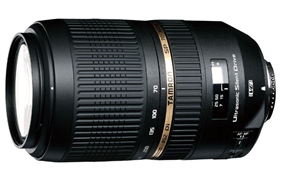I received a communication from a newbie photographic friend the other day. It went, “Have you used a Tamron lens? I’m thinking of investing in the 18-270 pzd. I’ve recently read some mixed reviews. I’m shooting the rugby at the weekend and want a lens that covers wide angle team shots and the action without having to keep changing lenses. I thought it would also make a good traveling lens.”
My reply was based on what the resultant pix were going to be used for. If they were to be used as enlargements the size of the side of a house, then I would not recommend the use of a zoom (Tamron or otherwise), but suggested a prime lens and medium format. However, if the idea was to end up with some happy snaps, or pix that could be published in the sports pages of the newspaper, then the zoom lens would be fine. I also said that Tamron was a highly thought of after-market lens manufacturer.

On my own ‘work’ camera, I have a 35-410 Leica lens, which would also be good to use for rugby matches, where close access to the action is not possible. However, the danger of long zooms is laziness! Instead of walking in close to take a shot, the photographer stays where he or she is, and lets the lens do the walking! One should also remember that the lens is the arbiter of the final image, not the camera.
Here are some different photographic situations and lens suggestions. When going for blue skies, the best lens to use to increase the blue color of the sky is the widest angle lens you have in the bag. To photograph your newly commissioned “genuine” Sunflowers by Van Gogh use the telephoto long lens and stand back. And when photographing rampaging tigers I would use the longest lens in the world. A close up lens to photograph its dental work would not be my idea of fun! So it gave some rough guides as to what lens to use under different circumstances. However, that is not the complete story.
You can select the correct lens for the job in hand, but unfortunately, that does not mean your finished photograph will have all the sparkle and sharpness you might want. There is another factor to be taken into account when selecting the lenses for your bag – and that is quality.
In actual fact, photo lenses are excellent examples of the old dictum – you get what you pay for (or in Thailand ‘som nam na’)! For example, I picked up the kit lens that came with a Nikon D50 a couple of years ago. It was so light it almost floated away in my hand! I then compared it with any of the Nikon prime lenses in my bag, and there was the world of difference. There was also a world of difference in the end results.
It was not the camera body, it was purely the lens. The light plastic lenses in the locally made kit lens are not as good as the heavy optical glass lenses in the expensive prime lenses from the same manufacturer.
To be able to produce a kit lens at the price, something has to be sacrificed. Optics are just acceptable and resolution, autofocus accuracy, color fidelity and contrast are all just good enough. They take acceptable photographs, and that is it. “Acceptable”, but not brilliant, and if you are going for ultimate print quality, then you are not going to get it.
A photography article I once read covered where they were testing the new Olympus Zuiko 150 mm f2 lens (300 mm film equivalent). It was a compact 160 mm in length and was heavy because it contained a lot of glass and mechanicals. The author had never seen a zoom lens of comparable focal length that was as good. Sadly, it would only fit an Olympus or a Panasonic/Leica. And it cost over 100,000 baht (then)! Camera extra!
Just as you can’t buy a Mercedes with Toyota money, you won’t buy the best lens in a bargain basement body and kit lens special. Sad, but true.




